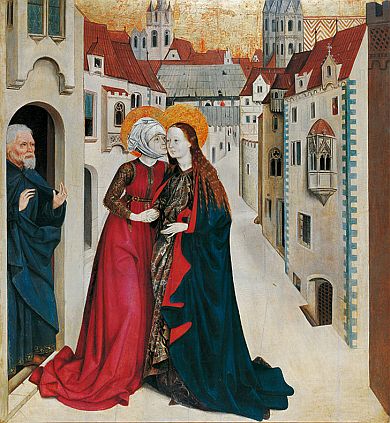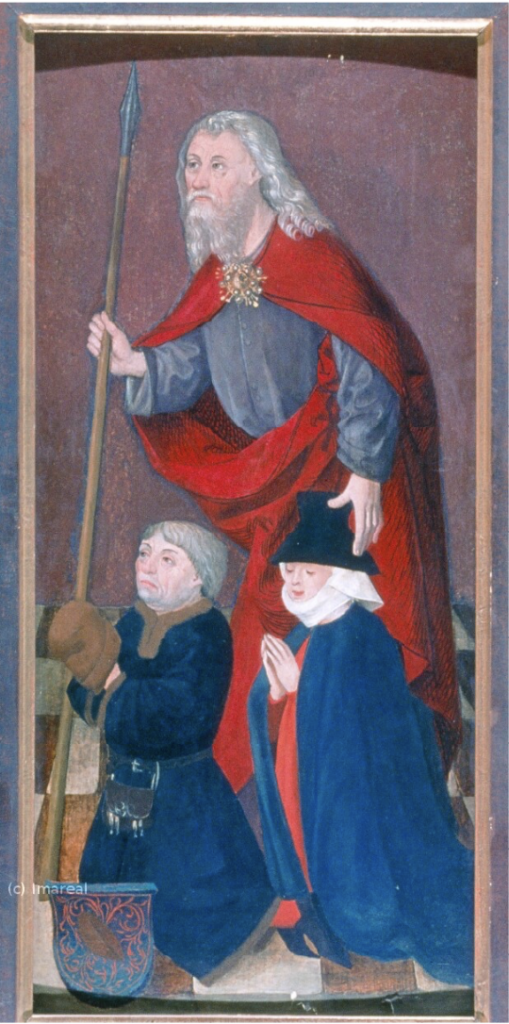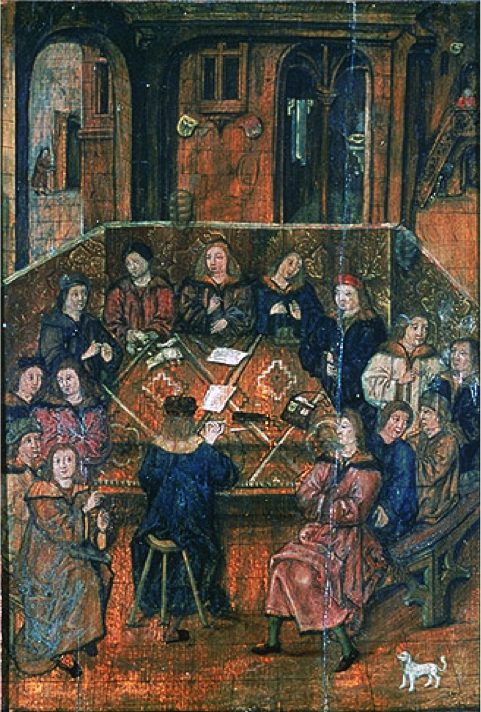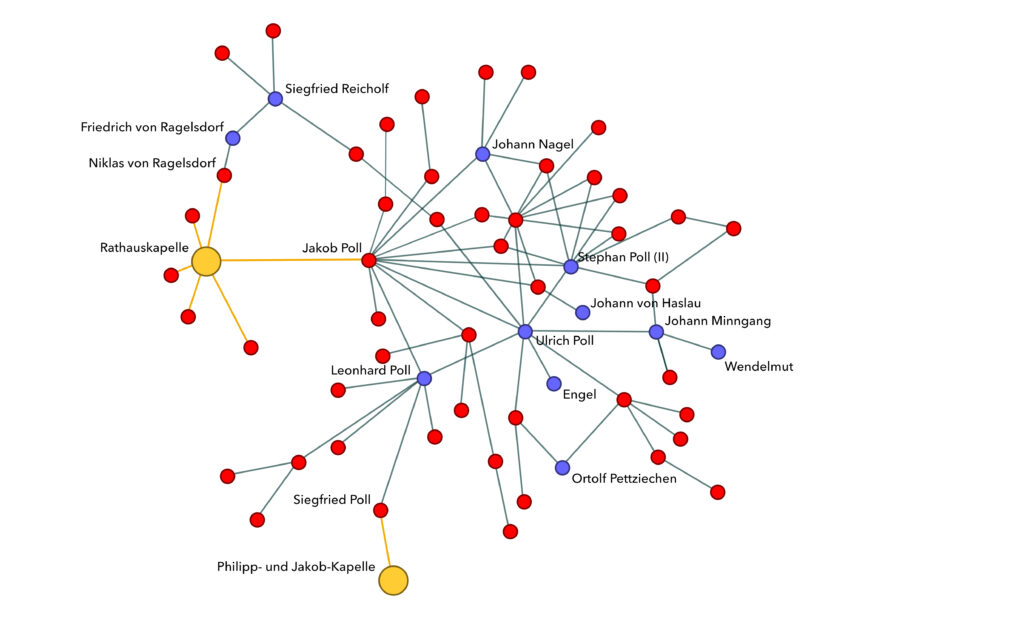
© https://www.geschichtewiki.wien.gv.at/Datei:HeimsuchungMariens.jpg, Museum im Schottenstift
Kinship as well as economic and neighbourly contacts were central elements of a culture of relationships in late medieval cities that mutually strengthened, expanded and articulated social networks. Marital connections served to secure one’s own social position. Kinship networks foundexpression, among other things, in inheritance agreements, economic transactions, but also in foundations of and donations to ecclesiastical institutions. The long-term success of thesemeasures, in turn, depended not least on the strength of these relationships: when donors made their assets available, they also expressed emotional closeness, reinforced social bonds among their relatives within and outside religious communities and expected the latter to pray for theireternal memory (memoria) in return for their investment. Hence, they remained permanently connected to the community of donors and the benefactors.

Photo: P. Böttcher/IMAREAL, REALonline Nr. 146
Family relations, political offices and communities of spiritual economy are thus chronologicallyand socially connecting constants. The same applies to the category of gender. Source material in many European cities proves that female citizens were legally competent actors and equalpartners in various legal transactions. Some of them came from families that were represented inthe city council and in other important functions, and they continued these relationships not least as members and functionaries in convents. In these cases, the dense entanglement between urban and ecclesiastical culture becomes especially evident. Family and property relationshipswere linked to political and religious interests. Decades of research have revealed a great dealabout these complex social networks in well-documented cities such as Florence and, increasingly, scholars have been systematically evaluating and visualising these networks usingnew digital methods.

Although Central European cities offer considerably less extensive source material compared to those in more urbanised regions of medieval Europe, their documentary material andadministrative records provide a good basis for answering the questions guiding our research.
For Vienna, the state of preservation of records from the second half of the 14th century onwards can be described as robust overall. In recent decades, research into the city’s history has also created an excellent basis for understanding the urban social fabric of Vienna, the city’srelationship with its surrounding area as well as with urban development in the wider Danube region. This existing qualitative research offers itself to be combined with new quantitativesurveys. The fundamental works of Otto Brunner, Peter Csendes, Ferdinand Opll, Richard Perger, Leopold Sailer and others on legal regulations, land ownership, finances and functions of urbanelites have been refined in recent years by network-analytical approaches and supplemented bynew work on the Viennese real estate market and on the spiritual economy in the city.

To conduct a systematic investigation of the complex relationships between communities ofproperty, kinship and spiritual economy as well as their effects on the formation of social communities, a broad collection of prosopographical data covering personal and institutionalactors is required. Methods of digital data collection are used for data acquisition and methods of social network analysis (SNA) for evaluation. The dense sacred topography of medieval Vienna provides an excellent basis for this. The municipal records increase drastically from the 14thcentury onwards and consist of two parts: charters and administrative sources in so-called ‘citybooks’. The project’s goal is to systematically analyse both corpora.
Based on two pilot projects funded by the Austrian Academy of Sciences (ÖAW) and the City of Vienna (City and Community, 2017/18; Social Networks in Late Medieval Vienna, 2020/ 21), weare systematically collecting data from two editions: the Quellen zur Geschichte der Stadt Wien(Sources of the History of the City of Vienna, QGStW) and the so-called “Testament Books” as part of the Wiener Stadtbücher (Viennese City Books, 1395-1430) with regard to kinship andgender relations, communities of property and spiritual economy. The project combinesprosopography, social network analysis and digital humanities, thus also contributing to theoptimisation of factoid prosopography with regard to fundamental source material on the historyof Vienna.
 City and Community. Social Networks in Medieval Vienna
City and Community. Social Networks in Medieval Vienna